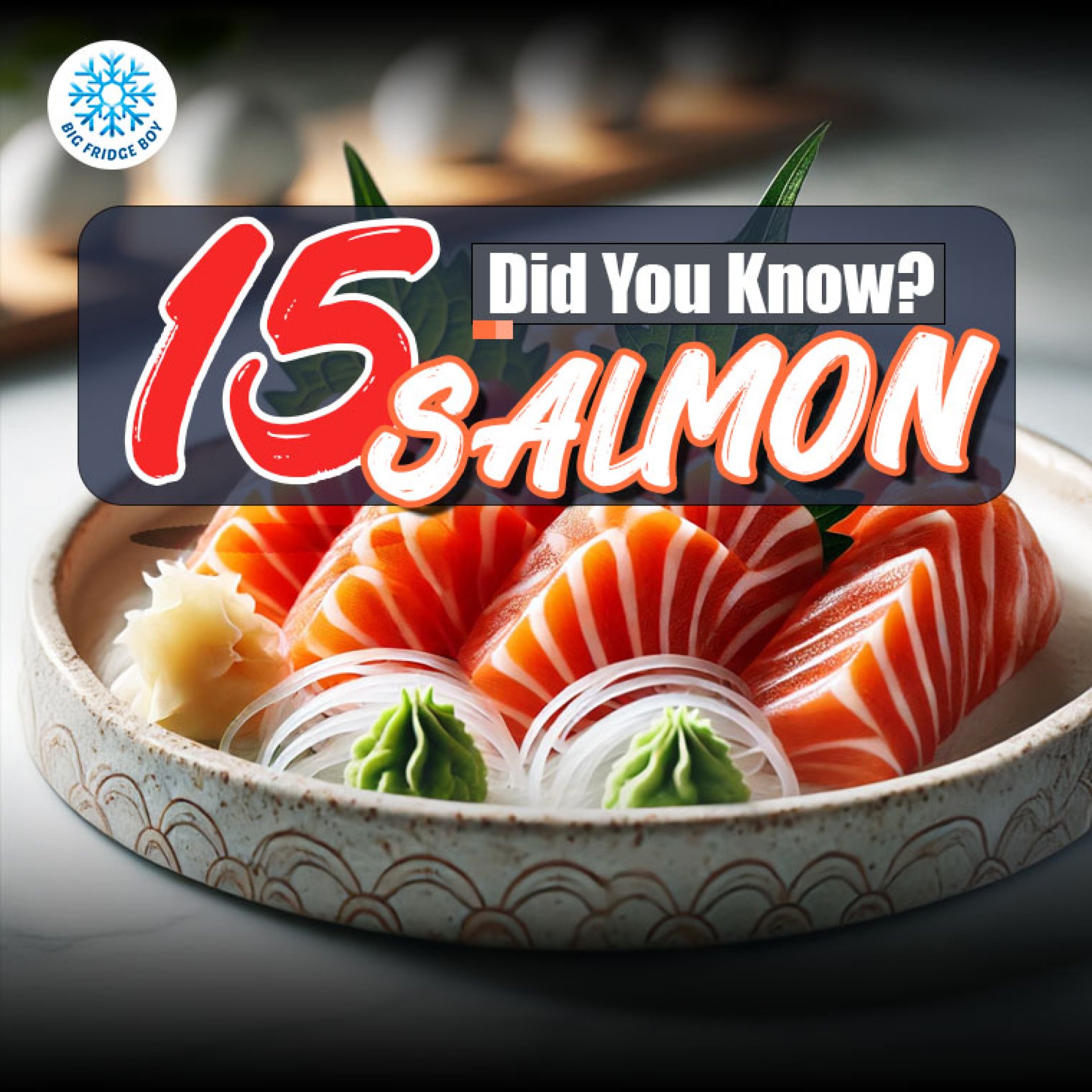Did You Know..? 15 Interesting Things About Salmon
Last updated: 11 Oct 2024
2084 Views

Salmon are marvels of the aquatic world, renowned for their incredible migrations and fascinating life cycles. These resilient fish harbor astounding adaptations, navigate immense distances, and play crucial roles in their ecosystems. We will explore various enthralling aspects and facts about salmon.
- Did you know that after spawning, the Pacific salmon will die and their decomposing bodies can sometimes be seen still swimming? in a phenomenon known as the “zombie salmon” due to post-mortem muscle movements.
- Did you know that most Pacific salmon species die shortly after spawning? But many Atlantic salmon can survive and return to the ocean to spawn again in subsequent years.
- Pacific Salmon: Most Pacific Salmon are semelparous, meaning they typically die shortly after spawning. This life history strategy involves a single reproductive event, followed by death. This is believed to be a strategy to enhance the survival of their offspring, by converting all available energy to the production of eggs and ensuring they return to freshwater to spawn at a time when their offspring will have the best chances of survival.
- Atlantic Salmon: Conversely, many Atlantic Salmon are iteroparous, meaning they can spawn more than once, recovering after each spawning event to return to the ocean and then repeating the cycle. This means that these salmon have multiple opportunities throughout their lives to pass their genes on to the next generation, potentially increasing their evolutionary fitness.
- Pacific Salmon: Most Pacific Salmon are semelparous, meaning they typically die shortly after spawning. This life history strategy involves a single reproductive event, followed by death. This is believed to be a strategy to enhance the survival of their offspring, by converting all available energy to the production of eggs and ensuring they return to freshwater to spawn at a time when their offspring will have the best chances of survival.
- Did you know that female salmon can lay up to 5,000 eggs, but only a few survive to adulthood? Small fish face risks from other animals, lack of food, and poor water conditions. The chance that a salmon will survive from egg to adulthood is very low, usually as low as 1% or less. This means that out of 5,000 eggs, only a few salmon may survive and reach adulthood.
- Did you know that during their journey back to their natal streams to spawn, known as the “salmon run,”? Some species of salmon do not eat at all and use stored energy reserves for the journey, often covering hundreds of miles and ascending thousands of feet in elevation. In essence, not eating during the spawning run is a survival strategy that allows salmon to maximize their energy efficiency and prioritize reproduction during their final life stage.
- Did you know that salmon can take two to four years or more to return to the waters where they were born to breed? Depending on the breed's biological readiness and the aquatic habitat, they must be able to travel thousands of miles. after laying eggs. Female salmon defend their eggs from predators. Both the female and male may perish following the egg-laying procedure. This is due to the fact that they use a lot of energy traveling back and forth to lay eggs.
- Did you know that salmon use olfactory homing to return to their natal streams to spawn? They imprint on the unique chemical signature of their home stream as juveniles and use this “scent map” to return as adults. This helps salmon avoid getting lost and complete their spawning missions.
- Did you know that salmon have a very good sense of smell? Which is hundreds of thousands of times more sensitive to smell than humans. Salmon use this sense of smell to track the scent of water flowing from their source. When salmon are ready to spawn They swim upstream to the area where they were born, where they lay eggs, and die thereafter. Therefore, this ability to smell is very important for the survival of salmon.
- Did you know that salmon have excellent eyesight? They can detect a range of colors, including ultraviolet, which is invisible to humans, allowing them to detect predators and prey better.
- Did you know that salmon are incredibly sensitive to water temperatures and generally thrive better in cooler waters? Salmon develop and grow optimally in lower temperatures with adequate levels of oxygen. Elevated water temperatures can impact their feeding, growth, and survival negatively. This sensitivity to temperature makes salmon particularly vulnerable to changes in climate and water temperatures, whether due to climate change or human activities. Elevated water temperatures can affect food availability and disrupt the ecological balance of habitats essential for salmon.
High temperatures stemming from climate change or human activities can impact the development and growth of salmon, affecting the availability of food in the water and disrupting the ecological balance essential for the survival of salmon. These situations put the survival of salmon at risk. - Did you know that Norway and Chile are the largest producers of farmed salmon globally? contributing significantly to global salmon supply? Norway is considered a pioneer in salmon farming, having started developing the industry in the late 1960s. Chile is another major player in the global salmon farming market, particularly focusing on the production of Atlantic salmon.
- Did you know that Alaska is home to five species of Pacific salmon? Including Chinook, Sockeye, Coho, Pink, and Chum? Alaska has stringent policies for the management and protection of salmon to maintain and promote sustainable fishing practices and ensure long-term sustainability. Thus, salmon farming is illegal in Alaska as the state is committed to maintaining and enhancing the appropriate aquatic environment and enabling aquatic life to inhabit and thrive sustainably. The dedication to sustainable management of fisheries and the environment ensures the longevity and health of salmon populations and their habitats.
- Did you know that the pink or red color seen in salmon flesh is indeed due to a compound called "astaxanthin,"? Which salmon obtain from their diet, primarily from krill and other shellfish. Astaxanthin is a carotenoid pigment that ranges in color from pink to red and has significant health benefits as it serves as an antioxidant that helps prevent various diseases. If salmon do not receive astaxanthin through their diet, their flesh will be grey. The color can vary depending on the type of food they consume, demonstrating the natural variability in their diet and environment.
- Did you know that the largest salmon ever caught weighed 126 pounds (57kg.)? It was a king salmon caught in a fish trap in 1949 near Petersburg, Alaska, known for its rich fishing grounds and vibrant fishing community.
- Did you know that salmon have a remarkable ability to jump? Allowing them to leap up to 10 feet, or 3 meters, to overcome obstacles like waterfalls and dams during their migration. This jumping ability enables them to return to their spawning grounds to lay eggs, a crucial process for the sustenance of the salmon population. These challenging journeys are part of their lifecycle, ensuring the continuation and reproduction of their species in their native habitats.
- Did you know that salmon can swim at speeds up to 9 miles per hour? They can cover many miles in a day during their migration.
Related Content



